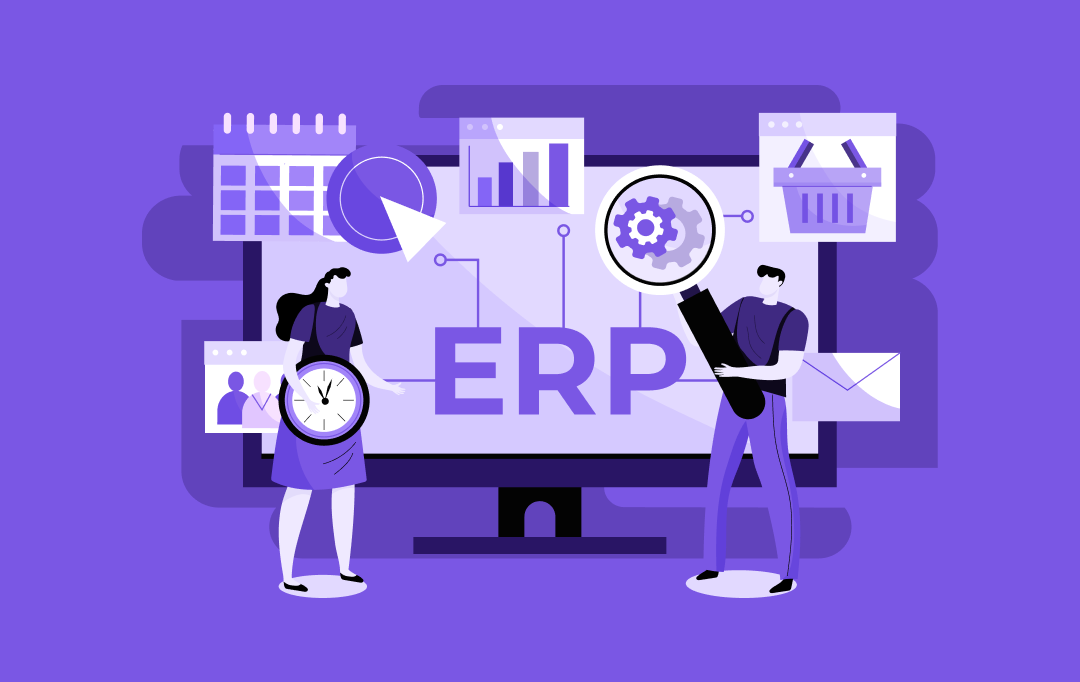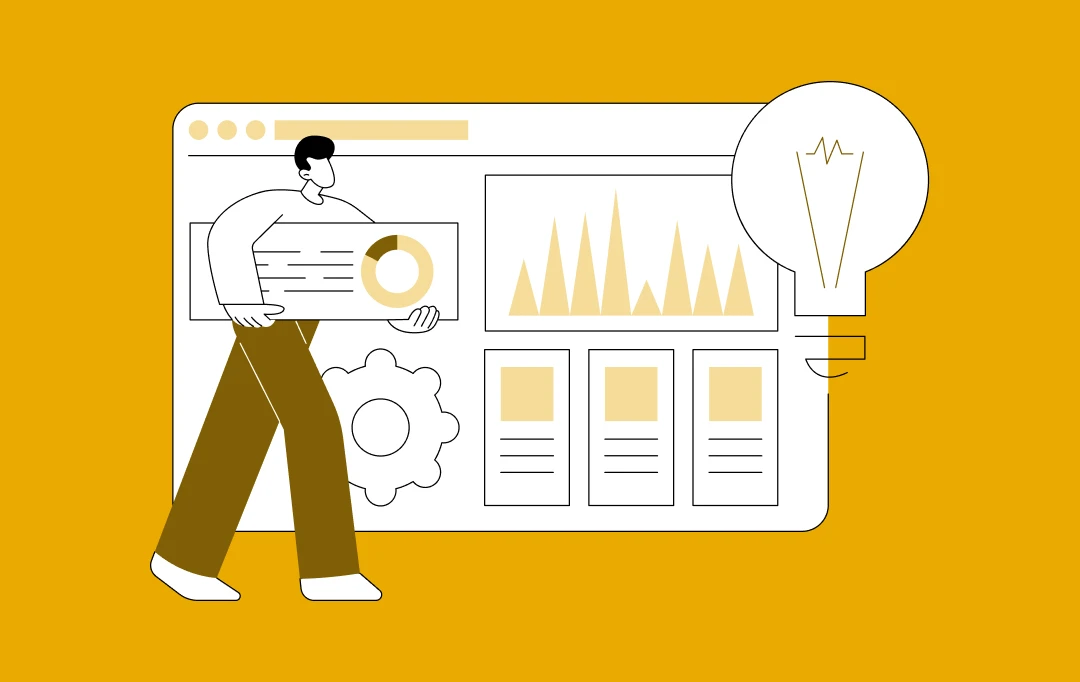- What is Facility Management?
- What is a Facility Management Software?
- Types of Facility Management Software
- Integrated workplace management system
- Computer aided facility management
- Computerized maintenance management system
- Enterprise Asset Management
- Features of a Facility Management Software
- Simplified work order management
- SaaS platform
- Third-party integrations
- Accessible contractor directory
- Simplified user interface
- Automate repair and maintenance
- Make buildings energy-efficient
- Prolong service lifecycle of systems and assets
- Optimize layout and installation of critical systems
- How to Implement Facility Management Software?
- Stage I: Identify the personnel
- Stage II: Get your software developed
- Stage III: Define and build out the system
- Stage IV: Program and deploy
- Stage V: Normalize usage
- Conclusion
In today’s increasingly complex working environment, organizations focus on building robust infrastructure for sustainable growth. It involves both the physical infrastructure and the underlying infrastructure for processes and systems that govern it. Whether you own a construction site, educational institution, or corporate office, you will likely encounter numerous problems as it is challenging to maintain regulations regarding maintenance and organization.
A facility management system lies at the organization’s center to streamline processes to channel maximum efficiency and utilization of infrastructure. Facility managers must be aware of the disparate platforms and bring them into an integrated, orderly, and well-managed solution.
Numerous facilities management tips and guides help simplify and expedite the overall management process. In this post, we will understand why and how to implement a facility management software but before that, let’s shine some light on the basics of facility management, types, features, and more.
What is Facility Management?
According to the International Standards Organization (ISO), facility management is an organizational function that integrates people, place, and processes within the built environment to improve the quality of life of people and the productivity of the core business.
The International Facility Management Association (IFMA), the most widely recognized professional association for facilities managers globally, defines it as “the practice of coordinating the physical workplace with the people and work of the organization.”
Facilities management includes tools, software, and services that support the business’s functioning, safety, and sustainability. A few of the facility management activities involve:
- Lease management (administration and accounting)
- Capital Project planning and management
- Maintenance and operations
- Energy management
- Employee and occupant experience
- Real estate management
- Emergency management and business continuity
- Space management

What is a Facility Management Software?
Facility management software is a custom software designed and developed to optimize building management. It enables organizations to manage their overall repair and maintenance programs from a web-based dashboard or facility management app. Modern FM software also aims to improve workflow completion and strengthen team communication.
Currently, facilities management software is a part of small to large businesses that helps them increase asset productivity and turn actionable items into meaningful results. The technology solutions empower multi-facility managers to perform multiple functions across ongoing maintenance and repair like commercial contractor sourcing and compliance, maintenance scheduling, invoicing, and data analytics.
Cloud-based solutions help businesses to look over data in real-time with added security measures. It also helps analyze spending patterns over time and helps in cost-cutting while enhancing communications with service providers and internal stakeholders.
Let’s now understand the types of facilities management software.
Types of Facility Management Software
While researching enterprise facilities management software system solutions, you must have come across many terminologies that are hard to decipher. Currently, in the market, there are various types of facilities management software that provide different functionalities at different levels for a business.
Below are the types of facility management software available in the market today.
Integrated workplace management system
An integrated workplace management system or IWMS is the complete suite of tools to manage facilities. With IWMS, you can handle everything from your real estate portfolio to floor plan creation, maintenance planning, control, etc. As per a forecast, deployment of IWMS solutions leads to a reduction in energy consumption by 10%, an improvement in the workspace by 40%, and reduced facility maintenance costs by 14%.
Computer aided facility management
Computer-aided facility management software, aka CAFM, is a facility management software that enables managers to improve long-term planning of space, facilities, budgets, preventive maintenance, and customer service requests to comply with full alignment with business needs. It helps plan, execute, and monitor all activities involved in space and workplace management.
Computerized maintenance management system
CMMS or computerized maintenance management systems are commonly used in industries where physical infrastructure is critical. It is software that centralizes maintenance data and processes maintenance operations on time. A few of CMMS functions are asset registry, resource and labor management, work order management, reporting, analysis, and auditing.
Enterprise Asset Management
EAM or enterprise asset management is a suite of software, systems, and services required to maintain and control operational equipment. The EAM software focuses on optimizing the quality and utilization of assets while increasing productivity and reducing operating costs. It involves work management, asset maintenance, supply chain management, and EHS initiatives.
A custom software development service provider can help you design, develop, and deploy facility management software that integrates various functionalities that meets your real-time business requirements.
Features of a Facility Management Software
Facility management software is laced with various features that define its capabilities. Currently, facility management tools are becoming more innovative, integrated, and advanced with additional features. Here are a few features that you must know while looking out for facility management software:
Simplified work order management
An efficient software ensures simplified work order management in the facility. Staff can enter maintenance requests directly into the system, and work orders can be routed to contractors at approved rates.
SaaS platform
Software-as-a-service or cloud-based enterprise facilities management software mitigates surging software installations and upgrades while eliminating the need to support additional hardware- reducing ownership costs.
Third-party integrations
A capable facility management system allows seamless third-party integrations such as accounting and payment systems to minimize data input errors and automate payment and audit processes.
Accessible contractor directory
Facility management software ensures an easily accessible contractor directory with regularly maintained and updated contract information. Additionally, you can access the directory to find qualified contractors that possess the right skills for specific projects.
Simplified user interface
A facility management system dashboard must offer a clean, simple, and modern user interface. A simplified user interface reduces clutter in viewing team data, speeds up training time, and enables faster team expansion.
Why Should You Implement Facility Management Software?

Running and managing multiple facilities simultaneously can be challenging if you traditionally do it. You have to manage various building systems, keep a real-time communication channel, and efficiently utilize all spaces to maximize company productivity and profitability.
Instead of running with papers and a checklist, facility management software keeps everything centralized into a single web-based dashboard. Repetitive tasks are automated, and resources are utilized in ways that deliver facilities at an efficient and productive level.
Below are several reasons that underline the importance of facility management software:
Automate repair and maintenance
As discussed above, a facility management system ensures streamlining of repair and maintenance tasks, so property managers and store owners don’t have to waste their time working with maintenance personnel. It enables them to devote their energies to other business aspects like managing sales and delivery.
With Facility management software like IWMS, they can watch and track the facility’s status in real-time, set repair schedules ahead of time, and automate the issuance of maintenance requests when certain conditions aren’t met.
Make buildings energy-efficient
Commercial and industrial buildings like transportation, gas, and manufacturing run multiple facilities and systems like HVAC, water filtration, and lightning to operate and require an ample amount of energy that needs a hefty amount of operational budgets.
With a capable facility management software solution, you can find ways to make critical systems energy efficient. These solutions allow extensive energy audits to determine which systems are using more energy and where the energy levels can be reduced while maintaining standard operating functions.
Prolong service lifecycle of systems and assets
A facility management system helps organizations get the most out of their assets and maximize their service lifecycle with inbuilt management tools and capabilities. When the systems are regularly maintained, they work efficiently for more extended periods. You can also get maintenance reports to analyze which systems need maintenance instantly.
It helps you plan and determine the best time to schedule repairs, preventive maintenance, or replacement of machinery. It mitigates system downtime and increases productivity, generating a significant return on investment.
Optimize layout and installation of critical systems
Installation of critical systems can dig deep holes in your pockets, but facility management systems empower managers, architects, and engineers to view a comprehensive picture of the whole facility on one dashboard. It allows them to deliver a more optimized layout for system installations.
Performance reports, energy audits, and analytics cumulatively assist business stakeholders in making better decisions that guarantee the efficient performance of critical systems and deliver a better ROI.
How to Implement Facility Management Software?
Implementing a facility management software isn’t just a one-day job; you need to research your organization’s requirements such as what activities you need your facility software to perform, how it can guide for better performance, and more.
Below are the five phases that every organization goes through to implement a facility management software:

Stage I: Identify the personnel
It is necessary to understand the personnel who will interact with the facility management solution. Possibilities include almost everyone, yet you need to figure it out. For instance, ground-level employees submit fixed tickets through the CMMS portal, department managers update the existing employee directory, planning executives rely on insightful dashboard data for real estate and financial decisions, facility managers collect and analyze that data to improve the workplace, and IT admins integrate office devices through the system.
Determine who needs what and why and gauge certain features, benefits, and functions to simplify the next phase.
Stage II: Get your software developed
The next phase is getting the software developed that suits your business needs. For software development, either you can explore facility management software companies to provide ready-to-deploy software solutions or get it developed by custom software development services in Perth. There stands no doubt that getting a custom facility management software developed is the best approach for stage two.
A ready-to-go software may not have all the functionalities that your business requires or may have some extra functionalities that you don’t require at all, either way, it is a costly investment. Whereas, when it comes to custom software development services in UK, you get what you actually need for your business along with support services to ensure the smooth functioning of the software.
You can use the information gleaned to make informed decisions in the software development process. The software development phase is crucial as it involves accurately implementing your facility management software. Make sure the software you go for meets the criteria for your business needs and expectations. Validate your MVP in terms of every facet like user interface, integration opportunities, report tracking, etc.
Stage III: Define and build out the system
Now that you’ve finally got a custom software developed, it’s time to map out workflows. Start by following the steps below to integrate the software into your existing operations to create a system:
- List out the processes and tasks you can automate through the platform
- Data collection and analysis you can revamp within the software
- Set up communication and collaboration modes integrated into the software
- Revamp the manual processes that need to be reinstated within the software
The custom software development company in New York, USA will help you complete the setup for your business and help you build and streamline each unique facet of the system.
Stage IV: Program and deploy
Before rolling out the software system, test it out and make sure it’s developed accordingly. This stage is also known as the wash, wax, and polish stage, where the system is ready to implement. However, a test roll-out might disrupt systems and frustrate employees, so you need to consider the final steps before deployment:
- Test workflows and processes to ensure they work as planned
- Establish credentials for employees as per permissions and admittance requirements
- Identify cross-departmental connections such as portals and workflows
- Run a security audit and accessibility between multiple applications
Stage V: Normalize usage
Now that you have implemented a facility management system, make it a standard for performing any activity in the organization. Your facility management software should be the backbone of operations and decision-making. The best way to notice ROI is by normalizing its usage across diverse verticals in your facility.
Setting up a facility management system is a progressive process to ensure that you meet the demands of your workplace to grow immensely.
Conclusion
Facility management technology incorporates new improvements every day with the involvement of new technologies that help create sustainable advanced systems to meet standard business requirements while delivering notable outputs. A facility management solution helps identify better ways to improve operations and maintenance procedures. With best practices in play, your facility turns out to be more proactive and less reactive.
Appinventiv, a fastest growing custom software development company in Melbourne, UK, UAE and globally can help you design, develop, and deploy efficient custom facility management software to streamline your business processes. We are a team of 800+ inventors catering to clients globally by providing them interactive solutions redefining software experiences that gives the best return on investment to your business. Contact us for your custom facility management software development.
FAQs:
Q: What are the data analytics that a facility management software must track?
A: Facility management analytics include key data trends, patterns, and insights within facility data. There are majorly 4 metrics that your facility management software must take into account:
Descriptive: Shows what’s happening now based on incoming data
Diagnostic: Explains why data is as it is and why events happened
Predictive: Helps forecast what is likely to happen in the future
Prescriptive: Instructs and provides suggestions on how to influence data and make impactful changes
Q: Which is the best software between IWMS, CAFM, CMMS, and EAM?
A. It depends on the usability of the business. As per your business requirements, you can choose among the IWMS, CAFM, CMMS, and EAM. However, an integrated workplace management system offers a complete suite that matches almost every business requirement.
Q: What is the ROI of facility management software?
A. Facility management software has a strong ROI, especially when handling and optimizing multi-location businesses that follow the traditional methods of checklists on paper. To calculate the ROI, multiply your total annual maintenance expense by the total yearly savings percentage. Subtract the cost of software implementation and total annual efficiency savings to determine the ROI.


- In just 2 mins you will get a response
- Your idea is 100% protected by our Non Disclosure Agreement.

Custom Development or White Label Solutions: Which is Right for Your Business?
Key takeaways: 77% of companies are prioritizing digital transformation; the right tech approach is crucial for staying competitive. Custom development offers tailored solutions for unique needs, flexibility, and long-term scalability. Whereas, white-label solutions provide quick market entry, cost-efficiency, and easy customization for standard needs. Appinventiv’s expertise helps you navigate custom development vs white-label to choose…

ERP Integration in Australia - Why It Is Essential and How to Do It Right
Key takeaways: ERP integration enables operational efficiency, reduced costs, and enhanced decision-making. Healthcare, finance, manufacturing, retail, and all the other sectors are benefiting from ERP integrations in Australia. While ERP integration can be costly, ranging from AUD 45,000 - AUD 450,000, it leads to significant long-term savings and scalability. Compliance with Australian regulations is critical,…

Predictive Analytics Software Development - Features, Benefits, Use Cases, Process, and Cost
Key Takeaways Predictive analytics helps businesses shift from “what has happened” to "what will happen," enabling proactive strategies rather than reactive ones. Real-time analytics and AI integration are driving the growth of predictive analytics, making it more accurate, accessible, and critical for business success. Custom predictive analytics solutions can enhance customer satisfaction, reduce costs, and…

















